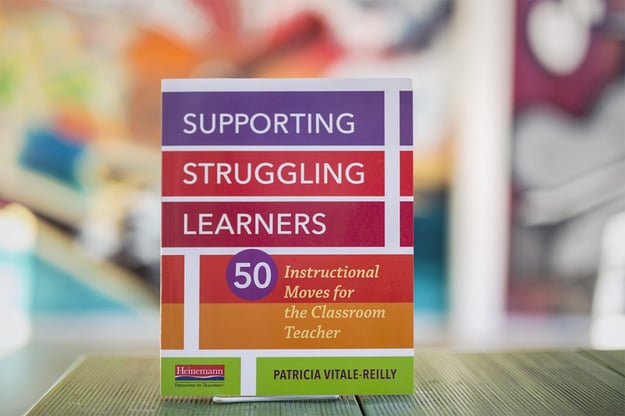Allowing students to show understanding in multiple forms plays off of one of three universal design for learning principles -- incorporating multiple means of expression. For a variety of reasons, expressing understanding is hard for many struggling learners. Sometimes, a learner has trouble putting thoughts to words and is unclear of what he or she wants to say. Other times, the learner knows what he or she wants to say but has trouble expressing it clearly and succinctly. And in other cases, a learner is taking time to process input and just needs time to express understanding. Regardless, we serve all our learners well when we provide students with multiple ways to demonstrate understanding.
|
ROLE PLAY |
Demonstrate scientific conclusions (such as the movement of molecules or the change in rock formations), plot elements of character change in a text, or depict an event of historical significance through a short skit or even pantomime. Role playing can happen individually, in pairs, or in small groups. |
|
VERBAL EXPRESSION WITH CONFIRMATION |
When a student expresses thinking, an opinion, or understanding, offer verbal confirmation. One way to offer verbal confirmation is to state back to students what you heard: "So what I believe I hear you saying is..." This helps acknowledge students' thinking (I never stray far from their original thoughts), model expression, and confirm their thoughts as valid and important. |
|
NONVERBAL COMMUNICATION |
Using nonverbal communication is efficient, represents a different medium, and creates an inclusive tone in your classroom. At the beginning of the year, your students can come up with three to five nonverbal signals to represent their thinking. Signals might represent: I agree, I have a question, I am thinking, I need a break, I am confused, or I need help. Students use these signals in unobtrusive ways and are able to communicate thinking, needs, and requests to you and to their peers. Varying the form of expression through signals allows all learners to express their thinking in tangible, accessible, and powerful ways. |
|
VISUAL UNDERSTANDING THROUGH SKETCHING |
Include art and visual representation as a medium for learning and expression. During instructional read-aloud, allow students to "sketch to sketch" to represent their thinking about the text through pictures. Or, demonstrate math solutions or process, scientific conclusions, and their understanding of a historical event through sketching or pictures. You might create historical murals so students can demonstrate their understanding of the nuances of a historical event (the causes of an event, and the effects shown through actions and the expressions on the faces of the patriots during the Boston Tea Party as an example). |
|
VISUAL UNDERSTANDING SCAFFOLDED THROUGH ORGANIZERS |
Use visual organizers to express ideas and understanding. Quick and simple organizers provide all students, especially struggling students, with an accessible option for expressing ideas and understandings. Organizers can be premade or quickly made by students. One example is the "3-2-1" -- three big ideas (one from the book, experiment, lesson, concept), two questions, and one element or place where you need help. Another is a basic box with a line and bullets. One the line students jot the big idea (or conclusion or solution), and next to each bullet, they share details. |
To learn more about Supporting Struggling Learners and download a sample chapter, visit Heinemann.com.
 Patricia Vitale-Reilly is a national consultant, teacher, and former staff developer at the Teachers College Reading and Writing Project. With TCRWP, she helped school communities implement exemplary literacy instruction, and presented workshops and courses on the teaching of reading, writing, assessment, and literacy in the content areas. In 2003, Patty founded her own literacy consulting group, and currently works directly with school leaders, coaches, teachers, and students inside and outside of classrooms. She is dedicated to guiding schools and districts to set and realize goals that matter most in their learning communities, and to her belief that every student has the right and the capacity to learn.
Patricia Vitale-Reilly is a national consultant, teacher, and former staff developer at the Teachers College Reading and Writing Project. With TCRWP, she helped school communities implement exemplary literacy instruction, and presented workshops and courses on the teaching of reading, writing, assessment, and literacy in the content areas. In 2003, Patty founded her own literacy consulting group, and currently works directly with school leaders, coaches, teachers, and students inside and outside of classrooms. She is dedicated to guiding schools and districts to set and realize goals that matter most in their learning communities, and to her belief that every student has the right and the capacity to learn.



